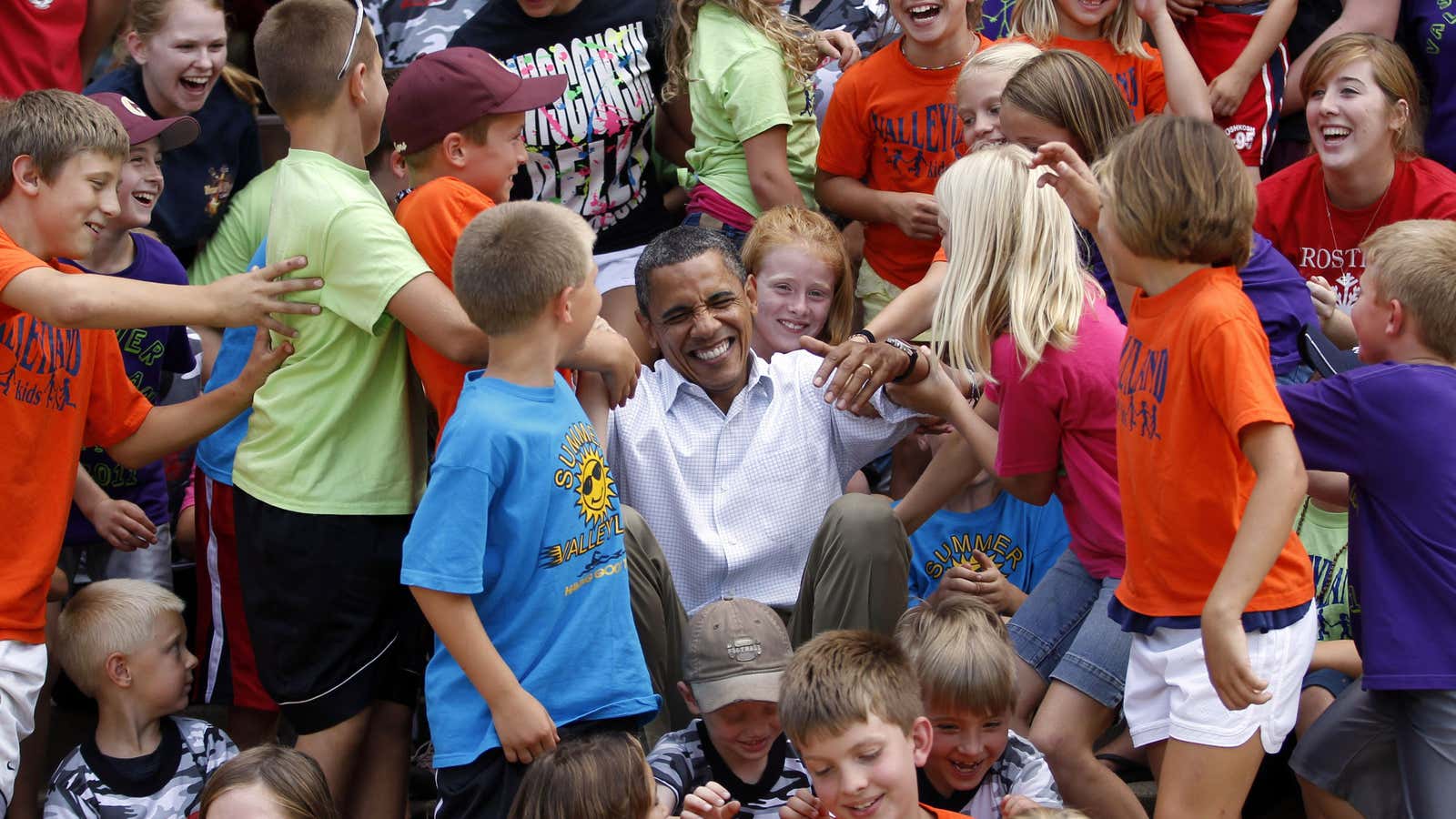Some argue that America’s less a melting pot than a salad bowl—a bunch of people of different races and ethnicities that might live side by side, but don’t mix. Well, according to a sweeping study of US genetics, there’s a lot more melting going on than some may realize.
The study, just published in The American Journal of Human Genetics (pdf), uses the gigantic database compiled by 23and Me, a company that offers commercial genetic testing. (About 80% of customers grant permission for scientists to use their data.) Focusing on the genetic backgrounds of those who identify themselves as African-American, European-American, and Latino, the team’s research reflects a wide degree of mixed ancestry.

This chart belies the variation across US states, though. For instance, southern self-identified European-Americans have the highest concentration of African DNA. Of those living in South Carolina and Louisiana, one in 20 have at least 2% African ancestry. Lower that threshold to 1%, and it turns out that in many parts of the south, around one in 10 self-identified European-Americans have African DNA. (Note: Since they represented only a small fraction of individuals in the dataset, the study excluded people who self-reported as having multiple ethnic identities.)
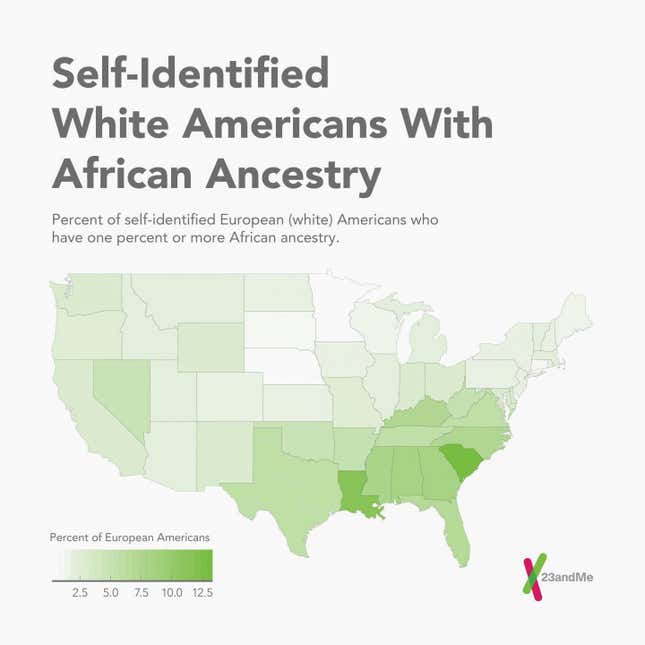
African ancestry also varies a lot among self-identified African-Americans:
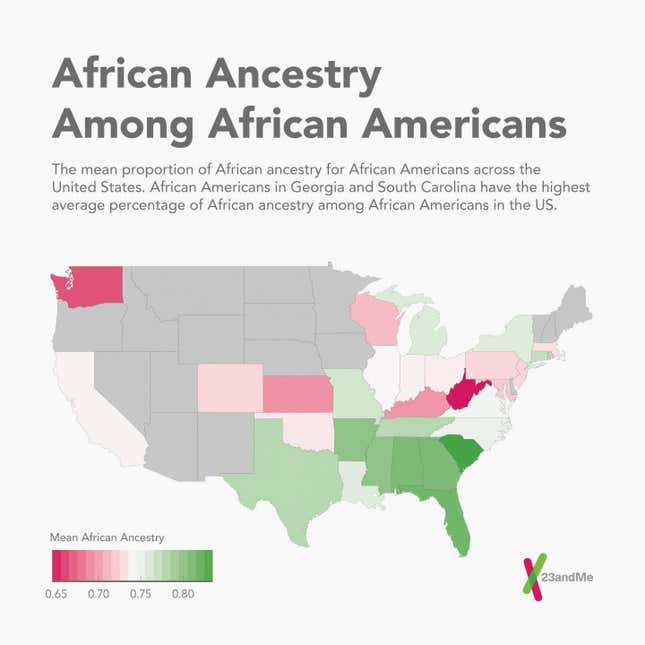
Comparing European ancestry estimates of X chromosomes versus the whole genome, the study estimates that around 5% of the ancestors of self-identified African-Americans were European females, while 19% were European males. In general, this admixture occurred about six generations ago—around the early 1800s, when slavery was legal.
Among European-Americans with at least 1% African ancestry, the rate is 15% higher on the X chromosome, suggesting a higher proportion of female African and male European couplings contributed offspring to the gene pool. This “sex bias” also existed among African Americans and Latinos, the scientists say.
The researchers found that Americans of European and African descent tended to identify as European-American, rather than African-American, if they had less than 28% African ancestry.
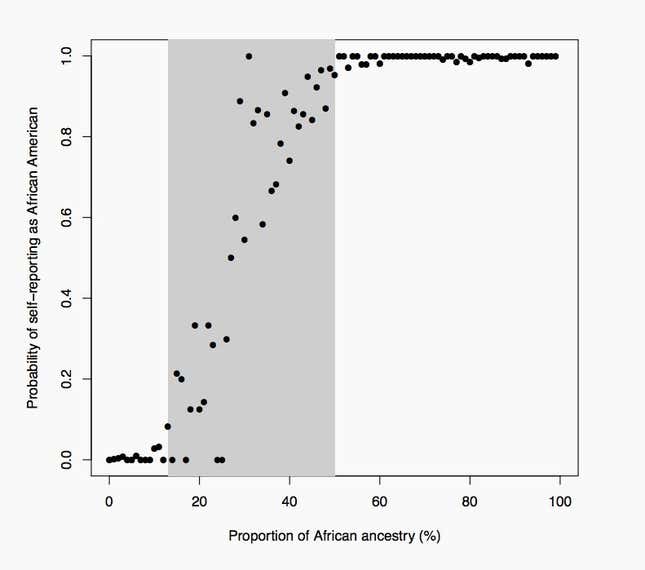
As for self-identified Latinos, the team estimates that, on average, they carry 18% Native American ancestry, 65% European ancestry, and 6% African ancestry. In general, Latinos mixed with Native Americans and Europeans about 11 generations ago—in the late 1600s—and with those of African ancestry about a century later. But the exact admixture varies dramatically according to the population with which Latinos identify:
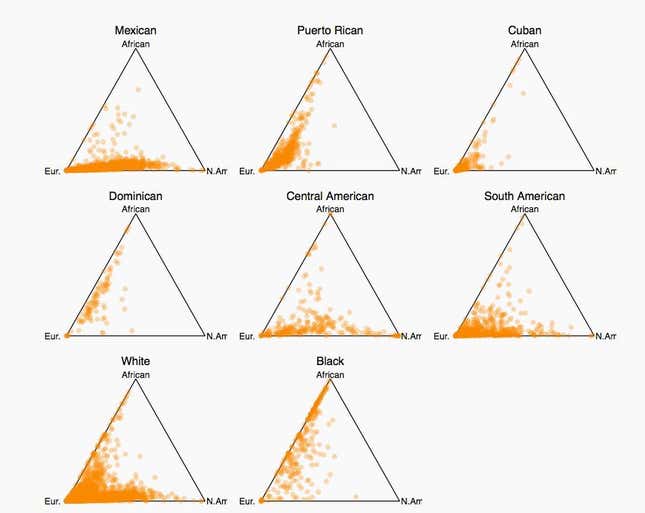
Among the most astonishing findings is how starkly ancestry varies from state to state. Many of these regional variations reflect historical phenomena, say the researchers—slavery, early Spanish colonization, waves of immigration from various areas of Europe, the Trail of Tears. For instance, among Oklahoman African-Americans, a startling proportion has a substantial degree of Native American ancestry. This, say the researchers, is probably because Oklahoma was a site of contact between African-Americans and Native Americans after the Trail of Tears in the 1830s. Not only did black slaves compose a large proportion of the state’s population in the 1860s (when there was a census), but it was also the location of the slave-holding “Five Civilized Tribes.”

For many Americans, particularly of African heritage, emerging genealogy technologies are creating novel opportunities to unravel their lineage, as shown by Henry Louis Gates, Jr’s Finding Your Roots program and 23andMe’s Roots into the Future study recruiting African-Americans. What this study suggests about America’s rich and complicated genetic history is that many Americans have a lot more in common with one another than they realize.
